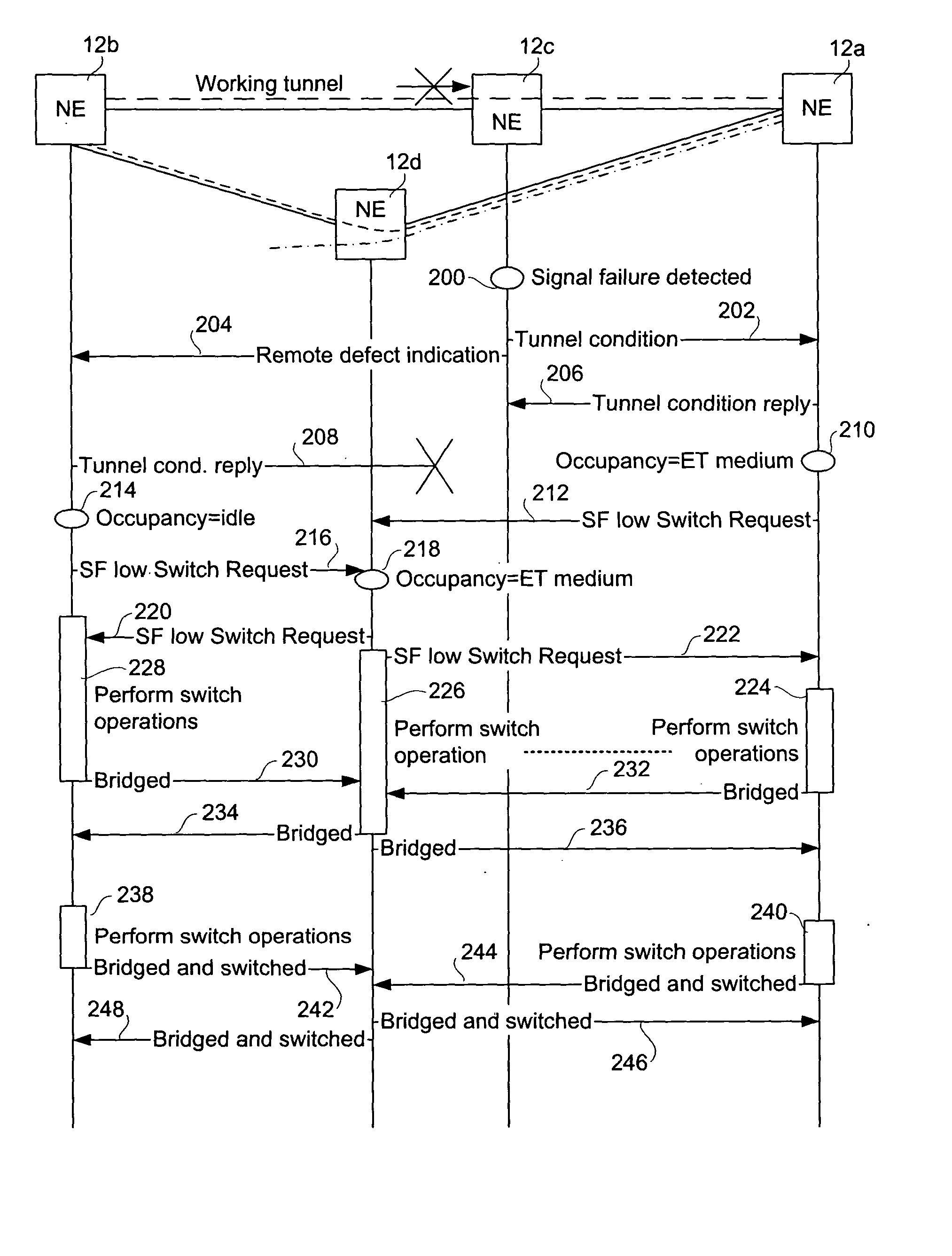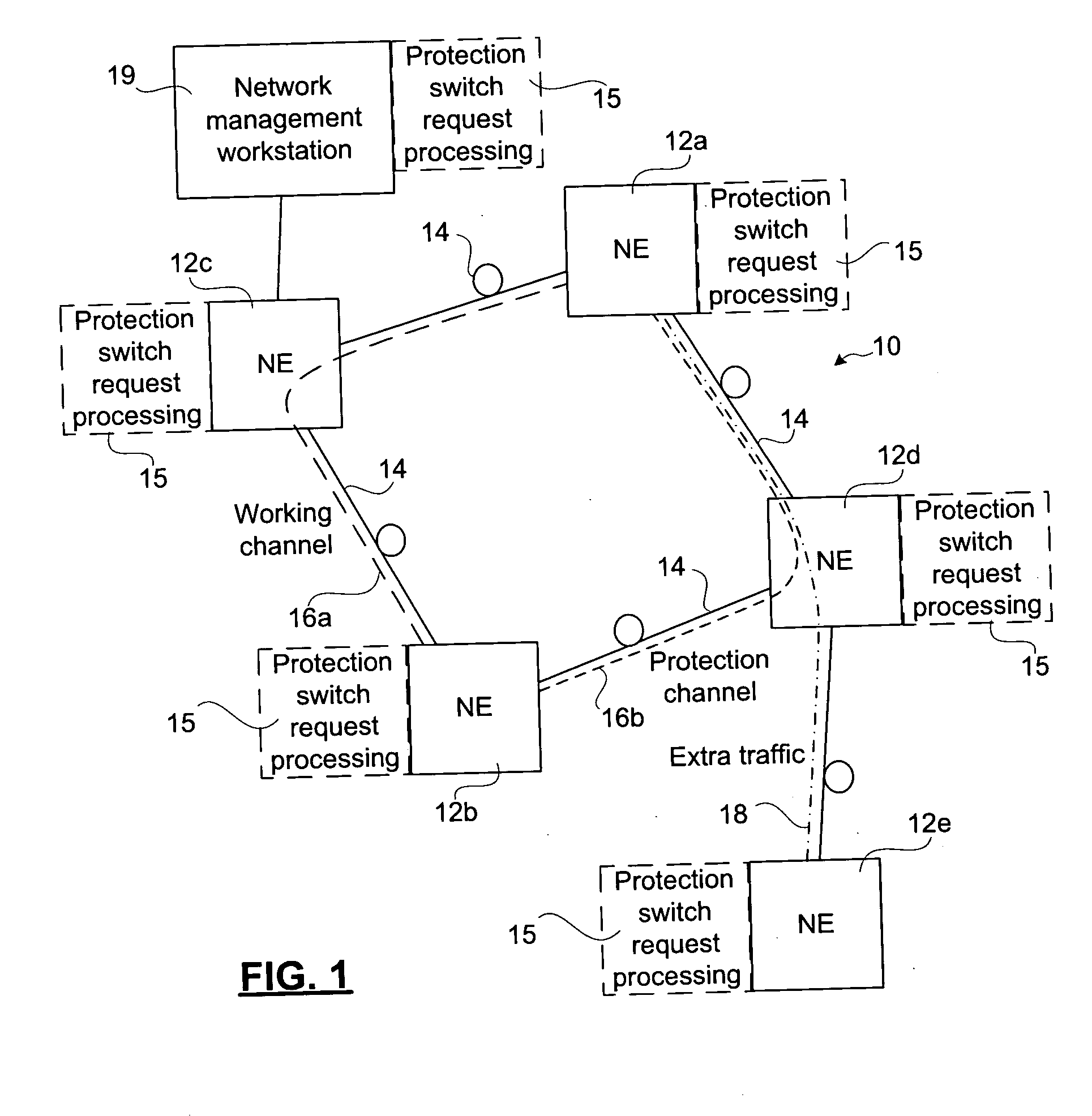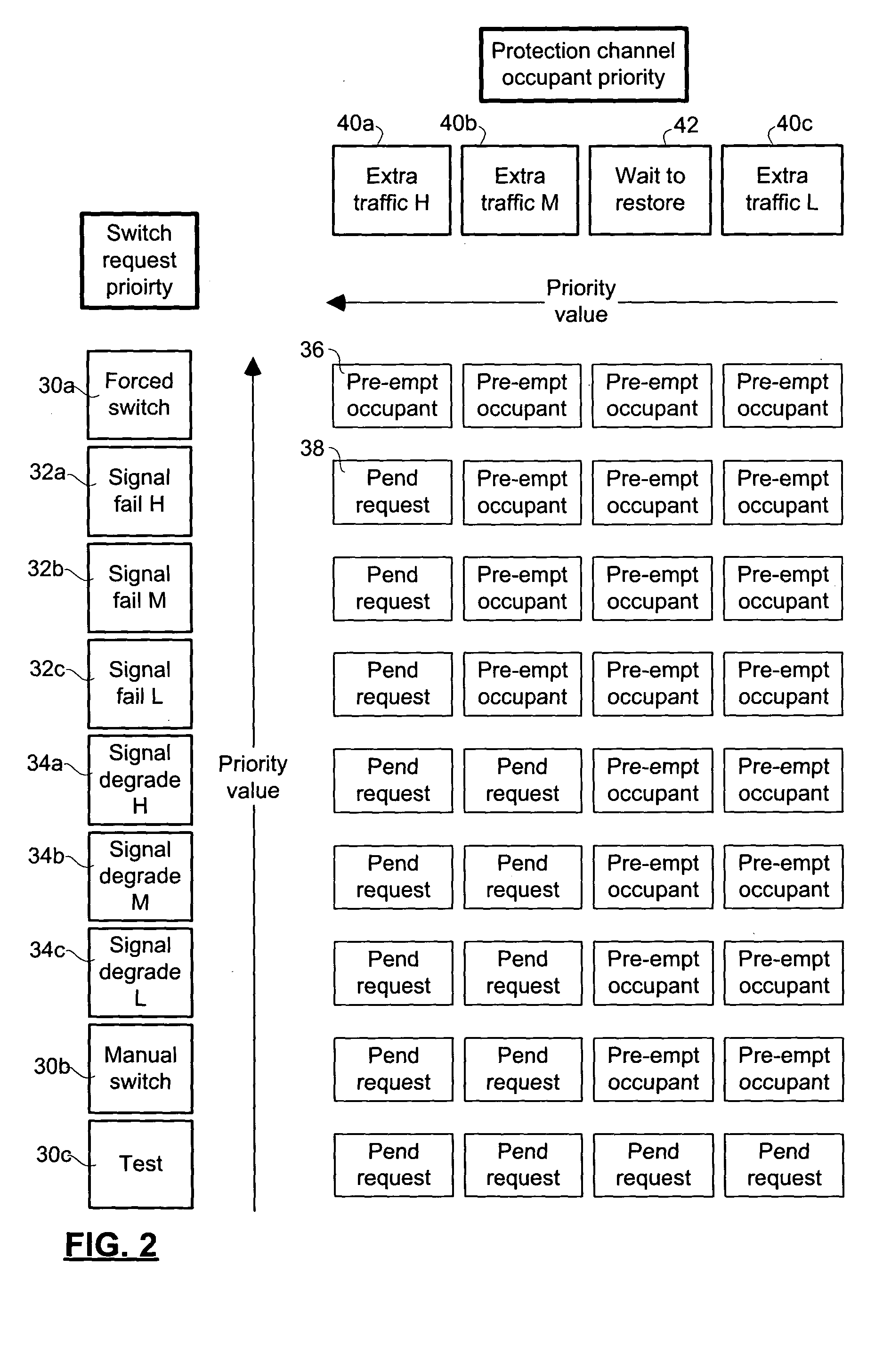Method and apparatus for providing grades of service for unprotected traffic in an optical network
a technology of optical network and grade, applied in the field of protection switching on optical network, can solve the problems of unreliable extra traffic, nut, working and protection not providing the desired flexibility, and achieve the effect of more efficient use of bandwidth
- Summary
- Abstract
- Description
- Claims
- Application Information
AI Technical Summary
Benefits of technology
Problems solved by technology
Method used
Image
Examples
Embodiment Construction
[0027] The invention provides a method for enabling data communications vendors to offer a plurality of grades of service for unprotected traffic.
[0028]FIG. 1 schematically illustrates an optical network 10 in which the present invention may be deployed. The network 10 includes five network elements 12 (NEs), individually identified as NEs 12a, b, c, d, e, respectively. The NEs 12 elements are interconnected by optical fiber links 14 and may be configured in any of the topologies known in the art of optical networking; including line-, ring- and mesh-connected network topologies. The optical fiber links 14 may be bidirectional or unidirectional links and may be an aggregate of individual strands of optical fiber medium.
[0029] In such a network 10, data channels 16 may be defined by switch-connecting (a portion of) data transport capacity of respective optical fiber links 14. The data channels 16 are intended to be trans-network or sub-network connections of a predetermined data tr...
PUM
 Login to View More
Login to View More Abstract
Description
Claims
Application Information
 Login to View More
Login to View More - R&D
- Intellectual Property
- Life Sciences
- Materials
- Tech Scout
- Unparalleled Data Quality
- Higher Quality Content
- 60% Fewer Hallucinations
Browse by: Latest US Patents, China's latest patents, Technical Efficacy Thesaurus, Application Domain, Technology Topic, Popular Technical Reports.
© 2025 PatSnap. All rights reserved.Legal|Privacy policy|Modern Slavery Act Transparency Statement|Sitemap|About US| Contact US: help@patsnap.com



